Narrow Results By
Decade
- 2020s 24
- 2010s 22
- 2000s 32
- 1990s 44
- 1980s 38
- 1970s 30
- 1960s 45
- 1950s 53
- 1940s 72
- 1930s 108
- 1920s 96
- 1910s 81
- 1900s 42
- 1890s 17
- 1880s 18
- 1870s 8
- 1860s 10
- 1850s 2
- 1840s 1
- 1830s 1
- 1820s 1
- 1810s 2
- 1800s 2
- 1790s 2
- 1780s 2
- 1770s 2
- 1760s 2
- 1750s 2
- 1740s 2
- 1730s 2
- 1720s 2
- 1710s 2
- 1700s 2
- 1690s 2
- 1680s 2
- 1670s 2
- 1660s 2
- 1650s 2
- 1640s 2
- 1630s 2
- 1620s 2
- 1610s 2
- 1600s 2
- 1590s 1
- 1580s 1
- 1570s 1
- 1560s 1
- 1550s 1
- 1540s 1
- 1530s 1
- 1520s 1
- 1510s 1
- 1500s 1
- 1490s 1
- 1480s 1
Subject
- Advertising Medium - Signs and Signboards 3
- Agricultural Tools and Equipment 1
- Agricultural Tools and Equipment - Gardening Equipment 1
- Agriculture 3
- Agriculture - Crops 1
- Agriculture - Farms 14
- Agriculture - Fruit and Berries 2
- Agriculture - Orchards 4
- Animals 1
- Animals - Bears 1
- Animals - Birds 2
- Animals - Cats 3
Dogwood Lodge closure
https://search.heritageburnaby.ca/link/archivedescription97998
- Repository
- City of Burnaby Archives
- Date
- [2000]
- Collection/Fonds
- Burnaby NewsLeader photograph collection
- Description Level
- Item
- Physical Description
- 1 photograph (tiff) : col.
- Scope and Content
- Photograph of Auriel Arner and Eira Koch visit with their mother, Ivy Hear, at the Dogwood Lodge, shortly before its closure.
- Repository
- City of Burnaby Archives
- Date
- [2000]
- Collection/Fonds
- Burnaby NewsLeader photograph collection
- Physical Description
- 1 photograph (tiff) : col.
- Description Level
- Item
- Record No.
- 535-3102
- Access Restriction
- No restrictions
- Reproduction Restriction
- No restrictions
- Accession Number
- 2018-12
- Scope and Content
- Photograph of Auriel Arner and Eira Koch visit with their mother, Ivy Hear, at the Dogwood Lodge, shortly before its closure.
- Subjects
- Persons - Seniors
- Persons - Families
- Public Services - Health Services
- Buildings - Residential - Seniors Housing
- Media Type
- Photograph
- Photographer
- Bartel, Mario
- Notes
- Title based on caption
- Collected by editorial for use in a February 2000 issue of the Burnaby NewsLeader
- Caption from metadata: "Auriel Arner and Eira Koch visit with their mother, Ivy Hear, one of five remaining patients waiting to be moved out of the Dogwood Seniors' Home."
- Geographic Access
- Willingdon Avenue
- Street Address
- 3755 Willingdon Avenue
- Planning Study Area
- Cascade-Schou Area
Images
dress
https://search.heritageburnaby.ca/link/museumartifact46563
- Repository
- Burnaby Village Museum
- Accession Code
- BV004.21.6
- Description
- Dress, c.1920. Purple silk satin with lace applique on sleeves. High collar with bow, buttons centre front, slightly flared ankle length skirt. Bias side panels on skirt. This dress seems characteristic of an item that would appeal to its particular owner. Born in 1880, she is following 1920s trends somewhat with the straight cut and bias skirt inserts, but also staying true to the fashion of her youth that she is comfortable with: a high collar, longer skirt, scarf, and lace applique are all borrowed from her time in the belle epoque. Extending from the stand collar are two long ties that could be tied into a bow or square knot. Directly under this at centre front is the opening with thirteen self fabric covered buttons. There is a bust dart on each side front, and a welt pocket on each side front just above the hips. At a dropped waist, there is a somewhat flared gore on each side of the skirt that extends from side front to back. The skirt extends to just above the ankles, with a small double fold hem. Inside, the dress is unlined; its seams are finished with a whip stitch. The garment was likely made by its owner.
- Object History
- Object was inherited by the donor ca. 1974. She was given it by her mother, who had inherited it from her own mother, Elizabeth (Babb) Heaney.
- Colour
- Purple
- Subjects
- Clothing
- Clothing - Costumes
- Historic Neighbourhood
- Central Park (Historic Neighbourhood)
- Planning Study Area
- Maywood Area
Images
dress
https://search.heritageburnaby.ca/link/museumartifact46564
- Repository
- Burnaby Village Museum
- Accession Code
- BV004.21.7
- Description
- Dress, c.1914-1918. White cotton pique. Calf length, three quarter length sleeves, buttons down centre front and up to neckline, waistband and cuffs. The tight collar is edged with a scalloped trim; the right side of the collar extends diagonally to the right, making a slight V neck, and turns down the centre front. The trim follows the line to the waistband. At each shoulder just before the sleeve, there is a pleat that opens up. On the front at the waistband, there is some gathering in the waistband, and some small pleats at centre back. On the bodice front right, there is a small pocket that ends in a triangle shape and is topped with scalloped edging. The sleeves are plain set-in, with fairly wide cuffs that turn up and are left open at the side. Down the whole centre front there is an opening. Each side has holes, but no buttons remain: on the right, regular button holes and on the left, small bound holes. The waistband is a two inch strip. Attached is the skirt in six slightly flared gores.
- Object History
- Object was inherited by the donor ca. 1974. She was given it by her mother, who had inherited it from her own mother, Elizabeth (Babb) Heaney.
- Colour
- White
- Subjects
- Clothing
- Clothing - Costumes
- Historic Neighbourhood
- Central Park (Historic Neighbourhood)
- Planning Study Area
- Maywood Area
Images
dress
https://search.heritageburnaby.ca/link/museumartifact46565
- Repository
- Burnaby Village Museum
- Accession Code
- BV004.21.8
- Description
- Dress, c.1910-1913. Cotton lawn print in floral and checkered, with chiffon yoke, lace, and mauve satin silk waistband. Long tiered skirt, long sleeves, round neckline. The cotton lawn fabric has a white background with vertical stripes of black and white checkers; purple flowers with green stems intertwine around the vertical checkers. The neckline rounds into a slight V shape with a yoke of ivory chiffon on top of lace, which extends to the waistband. On the front and back right and left side of the bodice, there is a tab extending over the waistband from the bodice fabric, edged in lace. The bottom of the bodice is gathered to add some volume. The bodice is also open around the shoulders, edged with lace. There is a section of the main fabric underneath that connects to the lining. The sleeves are full length, with some volume. The cuff begins halfway down the forearm with a gathered lace ruffle. The cuff section is narrower, and ends with three snaps at the wrist and another lace ruffle. At the waist, there is a gathered mauve satin silk waistband, tacked on to the dress. The skirt is attached underneath in two tiers. The overskirt, attached to the bodice, has two somewhat flared gores and one godet on the right side seam from just above the knee to the calf. It also ends at the calf, and just above the hem there is a tiny band of drawn thread work embroidery. The bottom tier is attached to the skirt lining under the top hem; it is made up of four gores, all gathered. The lining to the dress is done in ivory china silk, and it extends into the sleeves. In the bodice lining, there are four bones to hold its shape: on in the centre front and back, and one on each side. There are six panels in the back and four in the front, all finished with flat felled seams. The centre front closes with hook and eyes, and the waistband is secured on top with snaps and a hook and eye; the left bodice tab is secured to the waistband with two snaps. The skirt lining is also china silk, closing down the left side front with snaps. The skirt also has a left side opening that closes with snaps. In each underarm there is a dress shield to protect the dress from perspiration. They each read: "Style 100 Trade Mark OMO. E. Y. 2. Odorless. No Rubber. Soak in cold soap suds, using good soap, scrub with a stiff brush, and rinse in clear cold water, shape carefully while wet, and dry thoroughly. Do not iron."
- Object History
- Object was inherited by the donor ca. 1974. She was given it by her mother, who had inherited it from her own mother, Elizabeth (Babb) Heaney.
- Subjects
- Clothing
- Clothing - Costumes
- Historic Neighbourhood
- Central Park (Historic Neighbourhood)
- Planning Study Area
- Maywood Area
Images
Edith Fleming
https://search.heritageburnaby.ca/link/museumdescription5130
- Repository
- Burnaby Village Museum
- Date
- [ca. 1900]
- Collection/Fonds
- Waplington family fonds
- Description Level
- Item
- Physical Description
- 1 photograph : col. print ; 12.5 x 9 cm
- Scope and Content
- Photograph of Edith Fleming (nee Barlow) (1877-1929) who married Reyland Corbett Fleming and is the mother of Ray and Eric Fleming.
- Repository
- Burnaby Village Museum
- Collection/Fonds
- Waplington family fonds
- Description Level
- Item
- Physical Description
- 1 photograph : col. print ; 12.5 x 9 cm
- Scope and Content
- Photograph of Edith Fleming (nee Barlow) (1877-1929) who married Reyland Corbett Fleming and is the mother of Ray and Eric Fleming.
- Names
- Fleming, Edith Barlow
- Accession Code
- BV016.46.85
- Access Restriction
- No restrictions
- Reproduction Restriction
- No known restrictions
- Date
- [ca. 1900]
- Media Type
- Photograph
- Scan Resolution
- 600
- Scan Date
- 13-Aug-2018
- Notes
- Title based on note on verso of photograph
- Note in blue ink on verso of photograph reads: "Ray Fleming's / mother / Edith Barlow"
- Photograph is part of Photograph album BV016.46.52
Images
Elderly woman and baby
https://search.heritageburnaby.ca/link/museumdescription1534
- Repository
- Burnaby Village Museum
- Date
- July 1936
- Collection/Fonds
- Burnaby Village Museum Photograph collection
- Description Level
- Item
- Physical Description
- 1 photograph : b&w ; 7 x 11 cm
- Scope and Content
- Photograph of an elderly woman seated on a chair on the lawn. She is holding a baby in her arms, and by her feet, there is a cat crouching down. According to the inscription on the photograph, it was taken on the occasion of the elderly woman's (referred to as Mother Laugley or Langley) 90th birthd…
- Repository
- Burnaby Village Museum
- Collection/Fonds
- Burnaby Village Museum Photograph collection
- Description Level
- Item
- Physical Description
- 1 photograph : b&w ; 7 x 11 cm
- Material Details
- inscribed in black ink, verso, t. "Mother Laugley [or Langley]/ taken on/ Mothers 90th/ birthday 1936/ + Eva's Babe", stamped, u.r. "B35"
- Scope and Content
- Photograph of an elderly woman seated on a chair on the lawn. She is holding a baby in her arms, and by her feet, there is a cat crouching down. According to the inscription on the photograph, it was taken on the occasion of the elderly woman's (referred to as Mother Laugley or Langley) 90th birthday in 1936, along with "Eva's babe".
- Subjects
- Animals - Cats
- Accession Code
- BV985.5901.5
- Access Restriction
- No restrictions
- Reproduction Restriction
- No known restrictions
- Date
- July 1936
- Media Type
- Photograph
- Related Material
- For other photographs of the elderly woman, see BV985.5901.2 and .4
- Scan Resolution
- 600
- Scan Date
- 2024-02-27
- Notes
- Title based on contents of photograph
Images
Evelyn Hardy-Le Grove, Marie Hardy and Helen Hardy
https://search.heritageburnaby.ca/link/archivedescription38059
- Repository
- City of Burnaby Archives
- Date
- [1939] (date of original), copied 1991
- Collection/Fonds
- Burnaby Historical Society fonds
- Description Level
- Item
- Physical Description
- 1 photograph : b&w ; 2.9 x 4.3 cm print on contact sheet 20.4 x 26.5 cm
- Scope and Content
- Photograph of mother and daughters (left to right) Evelyn Hardy Le Grove, Marie Hardy (mother) and Helen Hardy in the yard at 2930 McKee Street (later renumbered 5850 McKee Street).
- Repository
- City of Burnaby Archives
- Date
- [1939] (date of original), copied 1991
- Collection/Fonds
- Burnaby Historical Society fonds
- Subseries
- Burnaby Image Bank subseries
- Physical Description
- 1 photograph : b&w ; 2.9 x 4.3 cm print on contact sheet 20.4 x 26.5 cm
- Description Level
- Item
- Record No.
- 370-647
- Access Restriction
- No restrictions
- Reproduction Restriction
- No known restrictions
- Accession Number
- BHS1999-03
- Scope and Content
- Photograph of mother and daughters (left to right) Evelyn Hardy Le Grove, Marie Hardy (mother) and Helen Hardy in the yard at 2930 McKee Street (later renumbered 5850 McKee Street).
- Media Type
- Photograph
- Notes
- Title based on contents of photograph
- 1 b&w copy negative accompanying
- Negative has a pink cast
- Geographic Access
- McKee Street
- Street Address
- 5850 McKee Street
- Historic Neighbourhood
- Alta-Vista (Historic Neighbourhood)
- Planning Study Area
- Clinton-Glenwood Area
Images
Film of Dave Linton discussing Gilmore Avenue School
https://search.heritageburnaby.ca/link/museumdescription5117
- Repository
- Burnaby Village Museum
- Date
- January 17, 2017
- Collection/Fonds
- 100 Years of Gilmore School video collection
- Description Level
- Item
- Physical Description
- 1 video recording (mp4) (51 sec.) : digital, 23 fps, col., sd., stereo
- Scope and Content
- Recording is an anecdote shared by Dave Linton pertaining to Gilmore Avenue School in Burnaby. Dave displays a medallion which was awarded to his mother by the Burnaby School Board for perfect attendance between the years 1921-1929. Dave attended Gilmore Avenue School, but it is unclear which schoo…
- Repository
- Burnaby Village Museum
- Collection/Fonds
- 100 Years of Gilmore School video collection
- Description Level
- Item
- Physical Description
- 1 video recording (mp4) (51 sec.) : digital, 23 fps, col., sd., stereo
- Material Details
- Film recorded at the McGill Library on January 17, 2017 as part of an event to screen "100 Years of Gilmore School" by filmmaker Yunuen Perez Vertti.
- Scope and Content
- Recording is an anecdote shared by Dave Linton pertaining to Gilmore Avenue School in Burnaby. Dave displays a medallion which was awarded to his mother by the Burnaby School Board for perfect attendance between the years 1921-1929. Dave attended Gilmore Avenue School, but it is unclear which school his mother attended. Asked her name, he replies “Stark”.
- Creator
- Perez Vertti, Yunuen
- Subjects
- Buildings - Schools
- Accession Code
- BV017.48.2
- Access Restriction
- No restrictions
- Reproduction Restriction
- No known restrictions
- Date
- January 17, 2017
- Media Type
- Moving Images
- Historic Neighbourhood
- Vancouver Heights (Historic Neighbourhood)
- Planning Study Area
- Burnaby Heights Area
- Notes
- Title based on contents of film
Images
Video
Film of Dave Linton discussing Gilmore Avenue School, January 17, 2017
Film of Dave Linton discussing Gilmore Avenue School, January 17, 2017
https://search.heritageburnaby.ca/media/hpo/_Data/_BVM_Moving_Images/2017_0048_0002_001.mp4fork
https://search.heritageburnaby.ca/link/museumartifact84512
- Repository
- Burnaby Village Museum
- Accession Code
- X3691
- Description
- Three tined fork with mother of pearl handle. The are engravings along with base of the handle where it meets the mother of pearl and along the face of the fork itself. The silver is electro-plated and there is a hallmark on the back.
- Category
- 04.Tools & Equipment for Materials
- Classification
- Food Service T&E - - Eating & Drinking Utensils
- Object Term
- Fork, Serving
- Marks/Labels
- "EPNS / JMC / &S" - unidentified Electro Plated silver hallmark
- Measurements
- length: 14 cm.
- Subjects
- Food Service Tools and Equipment
Images
greeting card
https://search.heritageburnaby.ca/link/museumartifact27258
- Repository
- Burnaby Village Museum
- Accession Code
- HV974.90.2
- Description
- greeting card; Congratulations and Best Wishes -- 1926. The card is white with silver branches at left, with red, pink and white blossoms, gold and blue bar across top, yellow and black butterflies. There is a short verse "This merry little greeting...". Written in ink on the top right corner is "1926". Signature in black ink in lower right corner reads: "Mother".
- Object History
- Card received by Edna Caroline Corner (nee Bateman) from her mother, Mrs. E.W. Bateman, likely on the occasson of her daughter, Catherine Levins' birth. Item donated by Cathy Levins, grand-daughter of Elwin W. Bateman. Elwin W. Bateman and his second wife, Mary (Dale) Bateman moved into a landmark home built in the Deer Lake Crescent subdivision of Burnaby in 1922. The home is now a heritage landmark in Burnaby, and is located at the Burnaby Village Museum.
- Category
- 08. Communication Artifacts
- Classification
- Documentary Artifacts - - Other Documents
- Object Term
- Correspondence
Images
Harvest in Champion, Alberta
https://search.heritageburnaby.ca/link/museumdescription19905
- Repository
- Burnaby Village Museum
- Date
- 1930
- Collection/Fonds
- Esther Love Stanley fonds
- Description Level
- Item
- Physical Description
- 1 photograph : b&w ; 7 x 11.5 cm
- Scope and Content
- Photograph of a woman, two children and a dog in a field with harvest binders and tractor. Woman is identified as Orrie Sommers' mother and children are identified as Irene Sommeres (standing) and Myrna Sommers. Location is identified as Champion, Alberta.
- Repository
- Burnaby Village Museum
- Collection/Fonds
- Esther Love Stanley fonds
- Description Level
- Item
- Physical Description
- 1 photograph : b&w ; 7 x 11.5 cm
- Scope and Content
- Photograph of a woman, two children and a dog in a field with harvest binders and tractor. Woman is identified as Orrie Sommers' mother and children are identified as Irene Sommeres (standing) and Myrna Sommers. Location is identified as Champion, Alberta.
- Subjects
- Agriculture
- Agriculture - Farms
- Accession Code
- BV022.32.327
- Access Restriction
- No restrictions
- Reproduction Restriction
- No known restrictions
- Date
- 1930
- Media Type
- Photograph
- Scan Resolution
- 600
- Scan Date
- 2023-06-09
- Notes
- Title based on contents of photograph
- Photograph is part of Esther Love Stanley photograph album 1 (BV022.32.1)
- Note in blue ink on verso of photograph reads: "This was 1930 / harvesting here at / home with the / binders. One binder / flew to pieces before/ they got finished. / I guess it was / travelling too fast. / Orries mother / Irene / Myrna & / the pup"
- Note in ink on lower recto of photograph reads: "HARVEST_1930"
- Note in white ink on album page reads: "Champion, ALTA"
Images
Ina Shankie with children
https://search.heritageburnaby.ca/link/museumdescription4198
- Repository
- Burnaby Village Museum
- Date
- [196-] (date of original), copied [2016]
- Collection/Fonds
- Esther Love Stanley fonds
- Description Level
- Item
- Physical Description
- 1 photograph (tiff)
- Scope and Content
- Photograph of two women sitting on a dock with three children. One of the women has dark hair and the other is an elderly lady wearing a beret hat. Two girls and a boy are seated beside them. Several small houses and large trees are visible behind them. A large white rope is tied to the dock. Ina S…
- Repository
- Burnaby Village Museum
- Collection/Fonds
- Esther Love Stanley fonds
- Description Level
- Item
- Physical Description
- 1 photograph (tiff)
- Scope and Content
- Photograph of two women sitting on a dock with three children. One of the women has dark hair and the other is an elderly lady wearing a beret hat. Two girls and a boy are seated beside them. Several small houses and large trees are visible behind them. A large white rope is tied to the dock. Ina Shankie is identified with three of her children and the older woman on the right could be her mother in law Bertha Janet Shankie or her mother Esther Love Stanley.
- Accession Code
- BV016.43.94
- Access Restriction
- No restrictions
- Reproduction Restriction
- May be restricted by third party rights
- Date
- [196-] (date of original), copied [2016]
- Media Type
- Photograph
- Scan Resolution
- 600
- Scan Date
- 2017-01-29
- Notes
- Title based on contents of photograph.
- Image is from a binder of family history. Binder 3, fruit illustrations on cover, "Family Tree Photos".
- Digital image created from orginal photograph by donor
Images
Interview with Margaret Jane (Jean) Wright 1992 - Track 3
https://search.heritageburnaby.ca/link/museumdescription4637
- Repository
- Burnaby Village Museum
- Date
- July 8 1992
- Collection/Fonds
- Burnaby Village Museum Oral History collection
- Description Level
- Item
- Physical Description
- 1 audio cassette (0:08:49 min)
- Scope and Content
- Track 3: This portion of the recording pertains to entertainment, food, school, and music. Jean discusses the importance of music as entertainment, which everyone participated in. She notes that her family always had visitors, for meals or to stay. Jean describes how her mother maintained a kitchen…
- Repository
- Burnaby Village Museum
- Collection/Fonds
- Burnaby Village Museum Oral History collection
- Description Level
- Item
- Physical Description
- 1 audio cassette (0:08:49 min)
- Material Details
- Interviewer: Teresa Ballentine Interviewee: Margaret Jane (Jean) Wright (later Jean McCallum and later Jean Hogg) Total Number of Tracks: 6 Total Length of all Tracks: 1:09:29
- Scope and Content
- Track 3: This portion of the recording pertains to entertainment, food, school, and music. Jean discusses the importance of music as entertainment, which everyone participated in. She notes that her family always had visitors, for meals or to stay. Jean describes how her mother maintained a kitchen garden and domestic livestock, and what her mother did with the surplus. She talks about attending Gilmore Avenue School, relating how classes were held in various off-site locations when enrollment exceeded capacity. She also mentions attending the high school on Rosser Avenue. Jean talks of joining the school band in high school, playing the cornet. She describes becoming a member of the National Juvenile Band, playing concerts in many places, including the British Columbia Penitentiary.
- History
- Recording is an interview with Jean Hogg conducted by her daughter Teresa Ballentine. Jean talks about her life as a resident of Burnaby from her childhood in the 1910s to widowhood in the 1960s. Margaret Jane (Jean) Wright was born in Burnaby in August 1915, two years after her family moved to 3871 East Pender Street. She was one of five children of Joseph Wright and Wilhelmina Williams. Her first husband was Walter Angus McCallum, who she was married to from 1940-1965; they raised two daughters: June and Teresa. Her second husband's last name was Hogg.
- Creator
- Ballentine, Teresa
- Accession Code
- BV018.17.1
- Access Restriction
- No restrictions
- Date
- July 8 1992
- Media Type
- Sound Recording
- Notes
- Title based on content of sound recording
- Label on audio cassette case reads: "Jean & Terry / Re / Jeans Memories & / Her Life History"
- Label on Side A of audio cassette reads: "Jean Hogg - Memories / 1"
- Label on Side B of audio cassette reads: "Jean Hogg Memories / 2"
Audio Tracks
Interview with Margaret Jane (Jean) Wright 1992 - Track 3, July 8 1992
Interview with Margaret Jane (Jean) Wright 1992 - Track 3, July 8 1992
https://search.heritageburnaby.ca/media/hpo/_Data/_BVM_Sound_Recordings/Oral_Histories/2018_0017_0001_003.mp3Interview with Sadhu Binning and Sukhwant Hundal
https://search.heritageburnaby.ca/link/museumdescription19603
- Repository
- Burnaby Village Museum
- Date
- 1967-2023 (interview content), interviewed 29 May 2023
- Collection/Fonds
- Burnaby Village Museum fonds
- Description Level
- Item
- Physical Description
- 2 sound recordings (wav) (93 min., 7 sec.) + 1 sound recording (mp3) (92 min., 57 sec.)
- Scope and Content
- Item consists of a recording of an oral history interview with Sadhu Binning and Sukhwant Hundal, founders of Vancouver Sath conducted by Burnaby Village Museum Registrar, James Binks. The interview is taking place at the Burnaby Village Museum's exhibit "Truths not Often Told: Being South Asian in…
- Repository
- Burnaby Village Museum
- Collection/Fonds
- Burnaby Village Museum fonds
- Series
- Museum Oral Histories series
- Subseries
- Many Voices Project Interviews subseries
- Description Level
- Item
- Physical Description
- 2 sound recordings (wav) (93 min., 7 sec.) + 1 sound recording (mp3) (92 min., 57 sec.)
- Material Details
- Interviewer: James Binks Interviewee: Sadhu Binning and Sukhwant Hundal Location of Interview: Burnaby Village Museum Interview Date: May 29, 2023 Total Number of tracks: 2 Total Length of all Tracks:1:33:07 Digital master recordings (wav) were recorded onto two separate audio tracks, edited and merged together into one track and converted to mp3 for access on Heritage Burnaby
- Scope and Content
- Item consists of a recording of an oral history interview with Sadhu Binning and Sukhwant Hundal, founders of Vancouver Sath conducted by Burnaby Village Museum Registrar, James Binks. The interview is taking place at the Burnaby Village Museum's exhibit "Truths not Often Told: Being South Asian in Burnaby". The interview focuses on the history of "Vancouver Sath" as well as literary works created by Hundal and Binning and the Punjabi literary magazine "Watno Dur" and "Watan". 00:00 - 13:30 Interview opens with brief introductions and information on Sadhu Binning, Sukhwant Hundal and Vancouver Sath provided by the interviewer, James Binks. Interviewees Sadhu Binning and Sukhwant Hundal describe how they met and what they were focused on prior to the formation of the organization Vancouver Sath. Binning briefly describes how he became involved as a writer in the literary world and recalls how he published his first poem in an Indian literary magazine in 1972. Hundal describes how he immigrated to Canada from Punjab in 1975, the various industries that he worked in as a new immigrant and his interest in literature with a focus on social issues. Hundel describes how he developed a relationship with Sadhu Binning after his short story was published in "Watno Dur" literary magazine which in turn lead to his involvement with the Punjabi Literary Association and becoming co-editor of "Watnu Dur". 13:31 – 27:44 Hundal provides more background on his life as a South Asian immigrant, working in sawmills and completing a diploma in Power and Process Engineering and how he first became interested in literature while living in India. Binning and Hundal both share their insights into the formation of Vancouver Sath and provide details on their involvement with the Punjabi literary publication “Watnu Dur”. Binning describes how the inspiration for the formation of the Vancouver Sath organization came from India and that Binning, Hundal and some other members of the Punjabi Literary Association decided to form their own group where they could have more informal discussions around social, political and literary issues. 27:45 – 43:31 Binning describes how the political issues that were happening in Punjab between 1978 and 1983 influenced discussions in the South Asian community whereas prior to 1978 there was more focus on local issues that new immigrants were facing. Binning conveys how their work with Vancouver Sath endeavored to focus more on local issues and Hundal conveys how they made the decision to begin producing theatrical works rather than just written works to reach a wider audience. Hundal and Binning share names of the people that were involved with Vancouver Sath and describe some of the early plays that they performed. Binning describes the foundations of the organization where they worked together as a collective making decisions in producing and performing the works with Binning and Hundal taking on the responsibility for the written work. They talk about their first paid experience being invited to perform a few of their plays at the Vancouver Folk Music Festival. 43:32 – 55:17 Hundal and Binning describe how they continued to support themselves financially since they weren’t making money from Vancouver Sath. Binning and Hundal provide further details on how their collective worked with the process of writing the plays and presenting and discussing details with the Vancouver Sath community before performing to an audience. Hundal talks about the transition that the magazine “Watno Dur” took in 1986 which lead to renaming it “Watan”. Hundal and Binning discuss how in 1992 and 1993 they decided to try to get more young people involved and began publishing a magazine in English called “Ankur”. They describe the content and list some of the authors who contributed to the magazine. 55:18 – 1:20:12 Hundal and Binning provide background details on the author of “Maluka”, Sadhu Singh Dhami and describe the details that lead them to translating the book into Punjabi, touring with the author and adapting the novel into a play which Vancouver Sath performed. Binning and Hundal describe and discuss other plays that Vancouver Sath performed including some plays that were recorded and broadcast over local radio stations. 1:20:13 – 1:32:57 Binning and Hundal reflect on what lead Vancouver Sath to discontinue theatrical performances in the mid 1990’s. Binning and Hundal state how they are both still very involved in publishing literary works but no longer perform theatrical works. Binning and Hundal describe some of their literary works and projects that they’ve been involved in and also reflect on and describe the current theatre scene in the South Asian community. Hundal conveys that even though they no longer call themselves “Vancouver Sath” they continue to enjoy working as a collective discussing literary works and ideas.
- History
- Interviewees' biographies: Dr. Sadhu Binning was born on May 10, 1947 to mother Gurmej Kaur and father Jeet Singh Binning. Due to lack of proper records management in India at the time of his birth, it is believed that he was actually born sometime in December of 1947. He grew up alongside two brothers and one sister in a village located in Kapurthala, Punjab. Dr. Binning attended secondary school in the nearby city of Phagwara, Punjab although he did not complete his education here. Throughout his childhood, he enjoyed reading both Punjabi and Hindi novels and learned how to read Urdu as well. Dr. Binning’s uncle, Dhana Singh immigrated to Canada in 1933 and returned to India in 1953. When Dhana Singh returned to Canada in 1957, he sponsored Dr. Binning’s father, Jeet Singh Binning to immigrate. Dhana Singh co-owned a few saw mills in British Columbia and also worked in the truck driving industry. Dr. Binning remembers that some people who had lived in Canada would visit their village and that they appeared to be strong and healthy and looked happy. He also noticed that they would eat meat, so whenever they would visit there would be meat available. In 1967, when he was nineteen and a half years old, Dr. Binning immigrated Canada to join his father. He recalls his father and uncle and a friend arriving at the airport to pick him up. During his first few days, Dr. Binning made the decision to remove his turban and beard upon receiving advice from his uncle. Dr. Binning first obtained work on a farm in Abbotsford, working alongside his mother. While working, Dr. Binning also attended English classes in Vancouver. Dr. Binning’s Uncle Dhana Singh worked in a Vancouver saw mill and tried to help find work for his nephew but was unsuccessful. Dr. Binning soon found work at a saw mill in Avola and worked there until the end of the summer until a friend helped find him work in a saw mill in North Vancouver. During his free time, he enjoyed camping with friends. In 1970, Dr. Binning left the saw mill after obtaining a job at the post office. The post office offered lower wages than working at the mill but Dr. Binning believed that he would become more educated working here. While working as a postman, Dr. Binning recalls facing a lot of discrimination and racism and was often referred to as a ‘Paki’ multiple times a day. In 1973, Dr. Binning married Jagish Sihota. Sadhu and Jagdish originated from nearby villages in India and met each other in Canada. Dr. Binning’s wife, Jagdish worked at the Royal Bank of Canada for thirty years until her retirement. While working, she also looked after the household and their son and daughter. Jagdish also handwrote a magazine, “Watno Dur" (English translation: ‘away from homeland’) which was distributed in the community. In 1976, Dr. Binning became the editor of the magazine and the name was later changed to “Watan’ as they had accepted their new homeland of Canada. While working at the post office, Dr. Binning also attended night school starting in eighth grade. After receiving his high school diploma, he was accepted to Simon Fraser University and earned a Bachelor of Arts degree with a double major in Anthropology and Sociology and in 1986 he obtained a Masters degree from Simon Fraser University. While attending university, Dr. Binning was very active within the community and wanted to work to improve society. He first thought that he would return to India to contribute and improve rights in his homeland but upon seeing the prevalence of the movements in Canada, he realized that work needed to be done here too. In 1983, Dr. Binning became a founding member and contributor to a theatrical collective known as “Vancouver Sath”. The theatrical group produced plays that represented societal issues and were invited to perform at multiple conferences throughout British Columbia and Canada. The group focused and acknowledged the many issues in Punjab and in Canada. One of the plays that the group produced focused on the exploitation of Punjabi women who worked on farms in Canada. Dr. Binning continued to be involved as an integral member of Vancouver Sath until 1995. Over the years, Dr. Binning has strongly lobbied for Punjabi language education and between 1988 and 2008 he worked as Punjabi instructor at the University of British Columbia. He first worked as a teaching assistant at UBC under Dr. Harjot Oberoi and due to low wages, he simultaneously worked at the Post Office. In 2019, Dr. Binning received an Honorary Doctor of Letters from UBC in recognition of his work. Since 1973, Dr. Binning has lived in Burnaby and has resided in the same home that he and his wife purchased in 1987. In his free time, he enjoys cycling, watercolour painting, travelling abroad and going on road trips. Suhkwant Hundal is a founding member in the group known as Vancouver Sath and has spent a lot of time in Burnaby rehearsing and writing plays. Sadhu Binning and Sukhwant Hundal co-wrote the Vancouver Sath's first play, "Picket-Line" and many others. This play was staged in November 1984. He's authored and edited pieces for the various newsletters and magazines including "Watno Dur" and "Watan". Through the 1980's and early 1990's Hundal has been active in South Asian advocacy in Burnaby and the Lower Mainland. In his retirement years, Hundal has been a lecturer on Punjabi language at the University of British Columbia in the Department of Asian Studies. Interviewer biography: James Binks has lived in the Lower Mainland since 2009 after relocating from Ontario. James holds a Bachelor of Arts in Anthropology from the University of British Columbia, where he conducted researched on heritage, environment, and globalization in India, Nepal, and Italy. At Burnaby Village Museum, James contributed to the exhibit “Truths Not Often Told: Being South Asian in Burnaby”.
- Creator
- Burnaby Village Museum
- Subjects
- Occupations - Writers
- Organizations
- Organizations - Unions
- Migration
- Persons - South Asian Canadians
- Performances - Dramatic Performances
- Social Issues
- Social Issues - Discrimination
- Social Issues - Racism
- Names
- Vancouver Sath
- Binning, Dr. Sadhu
- Hundal, Sukhwant
- Dhami, Sadhu Singh
- Pritam, Amrita
- Rampuri, Gurcharan
- Tut, Mukhan
- Thobani, Sunera
- Hoss Mushroom Farm
- Deol, Jeevan
- Dulai, Phinder
- Dhillon, Sital
- Bhangoo, Bhavna
- Rai, Gurmail
- Punjabi Lekhak Manch
- Di Awaz, Samay
- Johal, Balinder
- Sara, Amanpal
- United Farm Workers Union
- Canadian Farmworkers Union
- Responsibility
- Binks, James
- Accession Code
- BV023.16.7
- Access Restriction
- No restrictions
- Reproduction Restriction
- No known restrictions
- Date
- 1967-2023 (interview content), interviewed 29 May 2023
- Media Type
- Sound Recording
- Notes
- Title based on contents of item
- Transcription available on request
Audio Tracks
Interview with Sadhu Binning and Sukhwant Hundal, 1967-2023 (interview content), interviewed 29 May 2023
Interview with Sadhu Binning and Sukhwant Hundal, 1967-2023 (interview content), interviewed 29 May 2023
https://search.heritageburnaby.ca/media/hpo/_Data/_BVM_Sound_Recordings/Oral_Histories/2023_0016_0007_003.mp3Interview with Shushma Datt and Sudhir Datta
https://search.heritageburnaby.ca/link/museumdescription19611
- Repository
- Burnaby Village Museum
- Date
- [1946- 2023] (interview content), interviewed 20 Jan. 2023
- Collection/Fonds
- Burnaby Village Museum fonds
- Description Level
- Item
- Physical Description
- 2 sound recordings (wav) (90 min., 21 sec.) + 1 sound recording (mp3) (90 min., 4 sec.)
- Scope and Content
- Item consists of a recording of an oral history interview with Shushma Datt and her son, Sudhir Datta conducted by Burnaby Village Museum Curator, Jane Lemke and Anushay Malik. 00:00 – 12:47 Interview opens with introductions. Shushma Datt shares information about; where she’s lived in Burnaby sin…
- Repository
- Burnaby Village Museum
- Collection/Fonds
- Burnaby Village Museum fonds
- Series
- Museum Oral Histories series
- Description Level
- Item
- Physical Description
- 2 sound recordings (wav) (90 min., 21 sec.) + 1 sound recording (mp3) (90 min., 4 sec.)
- Material Details
- Interviewers: Jane Lemke and Anushay Malik Interviewees: Shushma Datt and Sudhir Datta Location of Interview: Spice Radio, Norland Avenue, Burnaby Interview Date: January 20, 2023 Total Number of tracks: 2 Total Length of all Tracks: 01:30:21 Digital master recordings (wav) were edited into one recording and converted to mp3 for access on Heritage Burnaby
- Scope and Content
- Item consists of a recording of an oral history interview with Shushma Datt and her son, Sudhir Datta conducted by Burnaby Village Museum Curator, Jane Lemke and Anushay Malik. 00:00 – 12:47 Interview opens with introductions. Shushma Datt shares information about; where she’s lived in Burnaby since immigrating in 1972 and her arranged marriage which lead her to immigrate to Canada. Datt provides detailed information about her family background in Kenya and her parent’s decision to move their family from Kenya to India in the 1960s and then to England in the 1965. Datt describes her family’s experiences living in Kenya and India in the 1960s and provides some context on the political unrest that happened in Kenya which lead her family to leave. 12:48 - 28:07 Datt talks about her time living in England and shares information on her family life and her employment experiences. Datt conveys an experience from her childhood that inspired her to become a broadcaster and shares her experiences working for the BBC oversees service in England (1965-1972). Datt describes some of the articles that she's written for various publications and the people that she's interviewed. Datt highlights a particular experience about writing a critical review about the controversial design on Jimi Hendrix’s album “Axis: Bold as Love” that depicted Hindu religious iconography. 28:09 – 34:47 Datt and Datta provide further details about Datt's arranged marriage which lead her to immigrate to Canada in 1972 and to work as a broadcaster in Canada. Datt recalls her experiences working as a radio station operator for CHQM, a radio broadcaster for CJVB and starting her own South Asian radio station Rim Jhim in 1987. 34:48 – 40:01 Datt and Datta share information on where they’ve lived in Vancouver and Burnaby. Datt and Datta recall pivotal family life events that impacted their lives in 1974. 40:02 – 45:53 Datt recalls the travel trunks and contents that she and her family brought with them when they left Nairobi. Datt describes the letters that her parents wrote. Datt and Datta describe photos of their family and convey the impacts to their family after two of Datt’s brothers died at 24 years of age. 45:54 – 50:56 Interview continues chronologically from 1974, after Datt’s son, Sudhir Datta was born. Datt describes how she had to work hard to help pay her bills and support her family. Datta describes his childhood growing up as a South Asian child living and attending school in Burnaby (1979-1992). Datt and Datta recall Datt’s graduation ceremony and Datta’s Order of British Columbia awards ceremony. 50:57 – 58:03 Datt and Datta talk about food and cooking and where they’ve shopped for traditional food supplies. Datta explains her family lineage as Hindus who eat meat and how she’s been a vegetarian for over 30 years. Datt and Datta share stories about Datt’s mother Leela Datta. 58:04 – 1:05:38 Both Datt and Datta reflect on what’s it’s been like living as South Asians in Burnaby. Datt conveys the message that she got from her mom, Leela Datta "not to assimilate but to integrate". They both reflect on how the ethnic and cultural diversity of neighbourhoods has changed over time and Datt describes his experiences as a student in Burnaby. 1:05:39 – 1:16:51 Datt and Datta talk about the role of religion in their lives, describe the purpose of Radio Rim Jhim and reflect on how the South Asian community has grown in Metro Vancouver and the disparities created within. They both recall how their lives were threatened and impacted in 1984 following an interview that Datt did with Indira Ghandhi. Datt talks about the origins of her and her son’s surnames. 1:16:52 – 1:26:11 Datt and Datta talk about and reflect on their own experiences of racism and discrimination. Datt talks about Spice Radio’s annual campaign “Raise your hands against Racism”. Datt and Datta provide background on the radio stations Rim Jhim and Spice Radio including; how they got started, their unbiased approach to broadcast content and their experiences in the complex realm of broadcasting a multi-cultural radio station. 1:26:12 – 1:30:04 In closing, Datt and Datta convey what they think that younger generations of South Asian Canadians should understand about the South Asian Community in British Columbia.
- History
- Interviewees biographies: Shushma Datt was born in Nairobi, Kenya in 1946 and is the second eldest of six children. In the 1960s during the unrest in Kenya, her family moved to India. After about nine months of living in India, Datt's family decided to return to Kenya, leaving Datt and her brother to complete their education in India. While living in India, Datt studied at Delhi University and worked at the Indian newspaper. In 1965, Datt, her parents and five siblings decided to leave Kenya and immigrated to England. While living in England, Datt got work as a broadcaster with the British Broadcasting Corporation (BBC) overseas service, producing her first program in 1969. During her time with the BBC, Datt has interviewed many influential artists including Jimi Hendrix and the Beatles as well as the Prime Minister of India, Indira Gandhi. In 1972, Datt immigrated to Canada and settled in Burnaby. In late 1973, Datt sponsored her mother who joined her in Burnaby. Datt joined the CJVB radio station in Vancouver working as the Punjabi and Hindi language broadcaster. Datt worked here until 1978 when she started her own radio station, Radio Rim Jhim. In 2005, Datt obtained her own AM radio band license for a multicultural radio station RJ1200 which was later rebranded "Spice Radio". In 2015, Datt launched Spice Radio's annual "Hands Against Racism" campaign which has won awards from the Government of British Columbia and the B.C. Association of Broadcasters. Datt has also been a producer for Omni TV and Shaw TV and was the first woman to obtain a broadcasting license from the Canadian Radio- Television Telecommunications Commission. In 1992, Shushma Datt was awarded the Order of British Columbia and is also the recipient of the Queen's Golden Jubilee Medal. Datt has been listed by the Vancouver Sun newspaper as among the 100 "most influential Indo-Canadians" and has been recognized by the Royal British Columbia Museum as one of the 150 "most influential British Columbians". Sudhir Datta is the only child of Sushma Datt and was born in Burnaby. Datta graduated with a computer science degree from Capilano University in 1995. Datta is the Vice President of Media Broadcasting (founded in 1984) creating television and radio programming for Canada's South Asian Community and has been the General Manager and Program Director of Spice Radio since 2006. Datta is also the author of many articles highlighting the South Asian community in Vancouver. Interviewers biographies: Anushay Malik is labor historian with a geographical focus on South Asia. Anushay studied at the University of London and was a research fellow at the International Institute of Social History in Amsterdam, Netherlands. In 2014, Anushay moved back to her native Pakistan and joined Lahore University of Management Services as an Assistant Professor. In 2023, Anushay is a visiting scholar at Simon Fraser University and lives in Burnaby with her family. Anushay was a co-curator of the Burnaby Village Museum exhibit “Truths Not Often Told: Being South Asian in Burnaby”. Jane Lemke has worked in various museums in the Lower Mainland and has been the Curator at Burnaby Village Museum since 2019. Her educational background includes a Master of Arts degree in History and a Master of Museum Studies degree. Her research focus has been on trauma and memory and its role in shaping Canadian identity. She loves sharing memories and stories of Burnaby with the public. Jane sits on the Council of the BC Museums Association and is the Chair of the BC Museums Association Professional Development and Education Committee.
- Creator
- Burnaby Village Museum
- Subjects
- Migration
- Occupations - Broadcasters
- Occupations - Entrepreneurs
- Occupations - Journalists
- Persons - South Asian Canadians
- Radio Stations
- Religions
- Religions - Hinduism
- Religions - Sikhism
- Social Issues
- Social Issues - Racism
- Responsibility
- Malik, Anushay
- Lemke, Jane
- Accession Code
- BV023.1.3
- Access Restriction
- No restrictions
- Reproduction Restriction
- No known restrictions
- Date
- [1946- 2023] (interview content), interviewed 20 Jan. 2023
- Media Type
- Sound Recording
- Notes
- Title based on contents of item
- Transcript available upon request
Audio Tracks
Interview with Shushma Datt and Sudhir Datta, [1946- 2023] (interview content), interviewed 20 Jan. 2023
Interview with Shushma Datt and Sudhir Datta, [1946- 2023] (interview content), interviewed 20 Jan. 2023
https://search.heritageburnaby.ca/media/hpo/_Data/_BVM_Sound_Recordings/Oral_Histories/2023_0001_0003_003.mp3Interview with "The Bollywood Boyz", Harvinder Sihra and Gurvinder Sihra
https://search.heritageburnaby.ca/link/museumdescription19608
- Repository
- Burnaby Village Museum
- Date
- [1970-2023] (interview content), interviewed 8 Jul. 2023
- Collection/Fonds
- Burnaby Village Museum fonds
- Description Level
- Item
- Physical Description
- 2 sound recordings (wav) (84 min., 14 sec.) + 1 sound recording (mp3) (62 min., 3 sec.)
- Scope and Content
- Item consists of a recording of an oral history interview with "The Bollywood Boyz", Harvinder Sihra and Gurvinder Sihra conducted by Burnaby Village Museum Registrar, Rajdeep. 00:00:00 – 00:05:26 Gurvinder “Gurv” Sihra and brother Harvinder “Harv’ Sihra introduce themselves, providing details on …
- Repository
- Burnaby Village Museum
- Collection/Fonds
- Burnaby Village Museum fonds
- Series
- Museum Oral Histories series
- Subseries
- Many Voices Project Interviews subseries
- Description Level
- Item
- Physical Description
- 2 sound recordings (wav) (84 min., 14 sec.) + 1 sound recording (mp3) (62 min., 3 sec.)
- Material Details
- Interviewer: Rajdeep Interviewees: "The Bollywood Boyz", Harvinder Sihra and Gurvinder Sihra Location of Interview: Burnaby Village Museum Interview Date: July 8, 2023 Total Number of tracks: 2 Total Length of all Tracks: 01:02:03 min Digital master recordings (wav) were recorded onto two separate audio tracks, edited and merged together and converted to mp3 for access on Heritage Burnaby Photograph credit: World Wrestling Entertainment (WWE)
- Scope and Content
- Item consists of a recording of an oral history interview with "The Bollywood Boyz", Harvinder Sihra and Gurvinder Sihra conducted by Burnaby Village Museum Registrar, Rajdeep. 00:00:00 – 00:05:26 Gurvinder “Gurv” Sihra and brother Harvinder “Harv’ Sihra introduce themselves, providing details on where they were born and grew up (in Burnaby), names of their parents and provide details on their family history. They describe how their grandparents and other relatives continued to live in Punjab after their father and mother immigrated to Canada in the 1970’s, recall the reasons their parents decided to immigrate and details of their lives before and after arriving in Canada. 00:05:27 – 00:06:46 Gurvinder and Harvinder describe some of their experiences travelling through Vancouver airport and compare their experiences with their mother’s own experiences. Gurvinder and Harvinder describe the layout of the airport and how customs and immigration has changed over time. 00:06:47 – 00:09:21 Gurvinder and Harvinder provide details about their mother, Parveen Sihra. They share information regarding her education in India and how she was unable to get work related to her degree in biology after immigrating to Canada. They convey how she worked in the Burnaby City Hall cafeteria in the 1990’s and how she worked part time in order to take care of her children. They share how their parents were proud Canadians participating in events inside and outside the South Asian community and were both fluent in English but often spoke Punjabi at home. 00:09:22 – 00:16:06 Gurvinder and Harvinder recall their childhood experiences growing up in Burnaby. They talk about the sports that they were involved with including hockey and Taekwondo, family vacations spent travelling to India and their experiences attending Marlborough Elementary School and Moscrop Secondary School.They describe how they first became interested in watching wrestling and trying it out on their own in their family home. Gurvinder and Harvinder recall their own experiences of discrimination while growing up and playing sports. 00:16:07 – 00:27:37 Gurvinder and Harvinder reflect and recall events that lead them to their dream of becoming professional wrestlers. They talk about pivotal events including attending their first live wresting event at GM Place with their father in 1996, beginning their training in Calgary in 2004, travelling across the country to participate in minor wrestling events, wrestling in Rogers Arena in 2017 and 2020 and getting their first call to join WWE. They talk about the support that they’ve had along the way to getting them where they are today and comment on why they want to be wrestlers in the WWE. 00:27:38 – 00:29:25 Gurvinder and Harvinder provide background information on their various wrestling personas and names in the world of professional wrestling including the Singh Brothers and the Bollywood Boyz. 00:29:26 – 00:38:43 Gurvinder and Harvinder talk about their experiences wrestling in India and the support and expectations of family members in becoming successful. Gurvinder and Harvinder recall and reflect on the experience of being fired from the WWE when cutbacks were made during the COVID pandemic. 00:38:44 – 00:42:53 Gurvinder and Harvinder describe what a day in their lives looks like now. They talk about how they’re still very passionate and focused on their wrestling careers and describe their experiences of having support and enthusiasm from fans and their parents. They talk about travelling across the country to particpate in different wrestling events. 00:42:54 – 00:47:18 Gurvinder and Harvinder talk about their training regimen including exercise and diet and describe areas in Burnaby where they like to train in gyms and the outdoors. 00:47:19 – 00:49:49 Gurvinder and Harvinder talk about neighbourhoods in Burnaby including Metrotown and Deer Lake and how they’ve seen them change over the years. 00:49:50 – 00:54:27 Gurvinder and Harvinder talk about their highest and lowest points in their wrestling careers, highlighting specific events. They talk about the physical stamina it takes for wrestling and compare their sport with the sport of Kabaddi (a contact team sport between two teams originating in India). 00:54:28 – 00:59:01 Gurvinder and Harvinder reflect on what toughness means to them, and what keeps them motivated to do what they do. 00:59:02 – 01:01:31 Gurvinder and Harvinder impart their words of wisdom to younger kids in chasing their passions and dreams and talk about their favourite Bollywood films and actors.
- History
- Interviewees' biographies: The Bollywood Boyz are a Canadian professional wrestling tag team composed of brothers Gurvinder "Gurv" Sihra (born in 1984) and Harvinder "Harv" Sihra (born in 1987). The pair are best known for their time in World Wrestling Entertainment (WWE) where Gurvinder and Harvinder performed under the ring names Sunil Singh and Samir Singh. They were both born and raised in Burnaby by their parents Harjeet and Parveen Sihra and attended Moscrop Secondary School. Gurvinder graduated from Douglas College where he studied criminology and has worked in loss prevention and has a third degree black belt in Taekwondo. Harvinder attended Douglas College with studies in history and has worked as a model and an actor. Both Gurvinder and Harvinder Sihra are Sikhs. Interviewer biography: Rajdeep was born and raised in the Lower Mainland and is of Punjabi (South Asian) descent. She has an Associate of Arts degree in Asian Studies from Kwantlen Polytechnic University, a Bachelor of Arts (Hons.) in Anthropology from the University of British Columbia. She is a student in the Restoration of Natural Systems program at the University of Victoria. Rajdeep works at Simon Fraser University as a Program Assistant and as a researcher with the City of Burnaby. At Burnaby Village Museum, Rajdeep contributed to the exhibit “Truths Not Often Told: Being South Asian in Burnaby”.
- Creator
- Burnaby Village Museum
- Subjects
- Education
- Migration
- Pandemics - COVID-19
- Persons - South Asian Canadians
- Religions - Sikhism
- Social Issues
- Social Issues - Discrimination
- Social Issues - Racism
- Sports
- Sports - Martial Arts
- Sports - Wrestling
- Sports - Ice Hockey
- Travel
- Names
- The Bollywood Boyz
- Sihra, Guvinder "Gurv"
- Sihra, Harvinder "Harv"
- Sihra, Harjeet
- Sihra, Parveen
- World Wrestling Entertainment "WWE"
- Moscrop Secondary School
- Marlborough Elementary School
- Metrotown
- Responsibility
- Rajdeep
- Geographic Access
- Deer Lake Park
- Accession Code
- BV023.16.12
- Access Restriction
- No restrictions
- Reproduction Restriction
- No known restrictions
- Date
- [1970-2023] (interview content), interviewed 8 Jul. 2023
- Media Type
- Sound Recording
- Photographer
- World Wrestling Entertainment "WWE"
- Notes
- Title based on contents of item
- Transcription available upon request - contact Burnaby Village Museum
Images
Audio Tracks
Interview with
Interview with W.H. O'Brien July / August 1975 - Track 1
https://search.heritageburnaby.ca/link/oralhistory18
- Repository
- City of Burnaby Archives
- Date Range
- 1914-1932
- Length
- 0:08:44
- Summary
- This portion of the interview pertains to W.H. "Harry" O'Brien's early childhood including the reasons why his family first moved to Burnaby, his first experiences of unemployment and what initially drew him to the Working Organization in Burnaby and their protest against evictions.
- Repository
- City of Burnaby Archives
- Summary
- This portion of the interview pertains to W.H. "Harry" O'Brien's early childhood including the reasons why his family first moved to Burnaby, his first experiences of unemployment and what initially drew him to the Working Organization in Burnaby and their protest against evictions.
- Date Range
- 1914-1932
- Photo Info
- Harry and Gertrude (Sutherland) O'Brien on their wedding day, October 12, 1940. Item no. 315-005
- Length
- 0:08:44
- Subjects
- Organizations
- Protests and Demonstrations
- Geographic Access
- Inman Avenue
- Historic Neighbourhood
- Central Park (Historic Neighbourhood)
- Interviewer
- Bradbury, Dr. Bettina
- Interview Date
- July / August 1975
- Scope and Content
- Recording is a taped interview with W.H. "Harry" O'Brien by SFU (Simon Fraser University) graduate student Bettina Bradbury. Major themes discussed are: the Army of the Common Good, the Union of the Unemployed and the Common Good Credit Union (now the South Burnaby Credit Union). To view "Narrow By" terms for each track expand this description and see "Notes".
- Biographical Notes
- W.H. “Harry” O’Brien was born in the coal mining town of Nanaimo, British Columbia on October 20, 1914. He came to Burnaby with his parents and five siblings in 1927. Harry’s mother, a school teacher, wanted her children to live closer to school in order to obtain a better education, so the O’Brien family settled at Inman Avenue, Burnaby. Harry's mother, Mary Anne Crossan, was Gilmore Avenue School's first teacher. Harry left school in June of 1929. Harry’s father worked as the caretaker at Central Park around this time and Harry helped him to clear brush, plant trees and enforce the land clearing and wood cutting permit regulations held by men who were on script. Although too young to vote by just over a week, Harry O'Brien worked as a scrutineer for the Co-operative Commonwealth Federation (CCF) during the 1935 Federal Election. On October 12, 1940 Harry O'Brien married Gertrude Sutherland at St. John the Divine in Burnaby. The Sutherland family came to Burnaby from Winnipeg in 1933 and settled at Nelson Avenue. Harry began his involvement with the Unemployment Organization in Burnaby by participating in an organised protest against the municipality for homeowner evictions brought on by unpaid taxes. The South Burnaby Union of the Unemployed organised in order to protest rules around receiving Relief. Harry became involved, eventually becoming one of the spearheads of the organization, taking over as secretary by 1936. Harry was an original member of the Army of the Common Good, helping to produce over one hundred and twenty-five tons of vegetables from its own gardens to feed Burnaby citizens suffering from the lack of resources during the Depression years. The members of the Army of the Common Good who cut wood for consumption or worked in the gardens were given credit for their work through LU (Labour Units) which they could then use to buy groceries and that at the Army's Cooperative stores, one of which was at McKay Avenue, where Harry began working as Manager of Groceries in 1937. The Credit Union movement of British Columbia was also organized by Harry O'Brien and his fellow Army of the Common Good members. W.H. "Harry" O'Brien died July 1, 1992.
- Total Tracks
- 9
- Total Length
- 1:17:56
- Interviewee Name
- O'Brien, Harry
- Interviewer Bio
- Bettina Bradbury teaches history and women's studies at York University. She is the author of Wife to Widow. Lives, Laws and Politics in Nineteenth-century Montreal. (Vancouver: University of British Columbia Press, June 2011), 520p; Working Families. Age, Gender and Daily Survival in Industrializing Montreal. (Toronto: Canadian Social History Series, McClelland and Stewart, 1993); (Republished Toronto: Oxford University Press, 1996) (3rd edition, Toronto: University of Toronto Press, 2007). These interviews were undertaken after she completed her MA at Simon Fraser University in 1975 with the support of an LIP grant.
- Collection/Fonds
- Burnaby Historical Society fonds
- Subseries
- Oral history subseries
- Transcript Available
- None
- Media Type
- Sound Recording
- Web Notes
- Interview was digitized in 2010 allowing it to be accessible on Heritage Burnaby. The digitization project was initiated by the Community Heritage Commission with support from City of Burnaby Council and the BC History Digitization Program of the Irving K. Barber Learning Centre, University of British Columbia. It was recognized by the Heritage Society of BC with an award in 2012.
Images
Audio Tracks
Track one of interview with W.H.
Track one of interview with W.H.
https://search.heritageburnaby.ca/media/hpo/_Data/_Archives_Oral_Histories/_Unrestricted/100-13-25/100-13-25_Track_1.mp3Interview with W.H. O'Brien July / August 1975 - Track 2
https://search.heritageburnaby.ca/link/oralhistory19
- Repository
- City of Burnaby Archives
- Date Range
- 1932-1936
- Length
- 0:09:26
- Summary
- This portion of the interview pertains to W.H. "Harry" O'Brien's decision to join the Army of the Common Good and its Cooperative (CG Co-op) as well as the South Burnaby Union of the Unemployed. Harry discusses his father's work as caretaker at Central Park and helping to deal with wood cutting per…
- Repository
- City of Burnaby Archives
- Summary
- This portion of the interview pertains to W.H. "Harry" O'Brien's decision to join the Army of the Common Good and its Cooperative (CG Co-op) as well as the South Burnaby Union of the Unemployed. Harry discusses his father's work as caretaker at Central Park and helping to deal with wood cutting permits and land clearing by men who were on script.
- Date Range
- 1932-1936
- Photo Info
- Harry and Gertrude (Sutherland) O'Brien on their wedding day, October 12, 1940. Item no. 315-005
- Length
- 0:09:26
- Names
- Central Park
- Subjects
- Organizations
- Geographic Access
- Central Park
- Historic Neighbourhood
- Central Park (Historic Neighbourhood)
- Interviewer
- Bradbury, Dr. Bettina
- Interview Date
- July / August 1975
- Scope and Content
- Recording is a taped interview with W.H. "Harry" O'Brien by SFU (Simon Fraser University) graduate student Bettina Bradbury. Major themes discussed are: the Army of the Common Good, the Union of the Unemployed and the Common Good Credit Union (now the South Burnaby Credit Union). To view "Narrow By" terms for each track expand this description and see "Notes".
- Biographical Notes
- W.H. “Harry” O’Brien was born in the coal mining town of Nanaimo, British Columbia on October 20, 1914. He came to Burnaby with his parents and five siblings in 1927. Harry’s mother, a school teacher, wanted her children to live closer to school in order to obtain a better education, so the O’Brien family settled at Inman Avenue, Burnaby. Harry's mother, Mary Anne Crossan, was Gilmore Avenue School's first teacher. Harry left school in June of 1929. Harry’s father worked as the caretaker at Central Park around this time and Harry helped him to clear brush, plant trees and enforce the land clearing and wood cutting permit regulations held by men who were on script. Although too young to vote by just over a week, Harry O'Brien worked as a scrutineer for the Co-operative Commonwealth Federation (CCF) during the 1935 Federal Election. On October 12, 1940 Harry O'Brien married Gertrude Sutherland at St. John the Divine in Burnaby. The Sutherland family came to Burnaby from Winnipeg in 1933 and settled at Nelson Avenue. Harry began his involvement with the Unemployment Organization in Burnaby by participating in an organised protest against the municipality for homeowner evictions brought on by unpaid taxes. The South Burnaby Union of the Unemployed organised in order to protest rules around receiving Relief. Harry became involved, eventually becoming one of the spearheads of the organization, taking over as secretary by 1936. Harry was an original member of the Army of the Common Good, helping to produce over one hundred and twenty-five tons of vegetables from its own gardens to feed Burnaby citizens suffering from the lack of resources during the Depression years. The members of the Army of the Common Good who cut wood for consumption or worked in the gardens were given credit for their work through LU (Labour Units) which they could then use to buy groceries and that at the Army's Cooperative stores, one of which was at McKay Avenue, where Harry began working as Manager of Groceries in 1937. The Credit Union movement of British Columbia was also organized by Harry O'Brien and his fellow Army of the Common Good members. W.H. "Harry" O'Brien died July 1, 1992.
- Total Tracks
- 9
- Total Length
- 1:17:56
- Interviewee Name
- O'Brien, Harry
- Interviewer Bio
- Bettina Bradbury teaches history and women's studies at York University. She is the author of Wife to Widow. Lives, Laws and Politics in Nineteenth-century Montreal. (Vancouver: University of British Columbia Press, June 2011), 520p; Working Families. Age, Gender and Daily Survival in Industrializing Montreal. (Toronto: Canadian Social History Series, McClelland and Stewart, 1993); (Republished Toronto: Oxford University Press, 1996) (3rd edition, Toronto: University of Toronto Press, 2007). These interviews were undertaken after she completed her MA at Simon Fraser University in 1975 with the support of an LIP grant.
- Collection/Fonds
- Burnaby Historical Society fonds
- Subseries
- Oral history subseries
- Transcript Available
- None
- Media Type
- Sound Recording
- Web Notes
- Interview was digitized in 2010 allowing it to be accessible on Heritage Burnaby. The digitization project was initiated by the Community Heritage Commission with support from City of Burnaby Council and the BC History Digitization Program of the Irving K. Barber Learning Centre, University of British Columbia. It was recognized by the Heritage Society of BC with an award in 2012.
Images
Audio Tracks
Track two of interview with W.H.
Track two of interview with W.H.
https://search.heritageburnaby.ca/media/hpo/_Data/_Archives_Oral_Histories/_Unrestricted/100-13-25/100-13-25_Track_2.mp3Interview with W.H. O'Brien July / August 1975 - Track 3
https://search.heritageburnaby.ca/link/oralhistory20
- Repository
- City of Burnaby Archives
- Date Range
- 1935-1936
- Length
- 0:08:41
- Summary
- This portion of the interview pertains to W.H. "Harry" O'Brien's thoughts on how the Union of the Unemployed was organized and what its main focus was. Harry discusses the Union of the Unemployed's dealings with the Commissioner.
- Repository
- City of Burnaby Archives
- Summary
- This portion of the interview pertains to W.H. "Harry" O'Brien's thoughts on how the Union of the Unemployed was organized and what its main focus was. Harry discusses the Union of the Unemployed's dealings with the Commissioner.
- Date Range
- 1935-1936
- Photo Info
- Harry and Gertrude (Sutherland) O'Brien on their wedding day, October 12, 1940. Item no. 315-005
- Length
- 0:08:41
- Historic Neighbourhood
- Edmonds (Historic Neighbourhood)
- Interviewer
- Bradbury, Dr. Bettina
- Interview Date
- July / August 1975
- Scope and Content
- Recording is a taped interview with W.H. "Harry" O'Brien by SFU (Simon Fraser University) graduate student Bettina Bradbury. Major themes discussed are: the Army of the Common Good, the Union of the Unemployed and the Common Good Credit Union (now the South Burnaby Credit Union). To view "Narrow By" terms for each track expand this description and see "Notes".
- Biographical Notes
- W.H. “Harry” O’Brien was born in the coal mining town of Nanaimo, British Columbia on October 20, 1914. He came to Burnaby with his parents and five siblings in 1927. Harry’s mother, a school teacher, wanted her children to live closer to school in order to obtain a better education, so the O’Brien family settled at Inman Avenue, Burnaby. Harry's mother, Mary Anne Crossan, was Gilmore Avenue School's first teacher. Harry left school in June of 1929. Harry’s father worked as the caretaker at Central Park around this time and Harry helped him to clear brush, plant trees and enforce the land clearing and wood cutting permit regulations held by men who were on script. Although too young to vote by just over a week, Harry O'Brien worked as a scrutineer for the Co-operative Commonwealth Federation (CCF) during the 1935 Federal Election. On October 12, 1940 Harry O'Brien married Gertrude Sutherland at St. John the Divine in Burnaby. The Sutherland family came to Burnaby from Winnipeg in 1933 and settled at Nelson Avenue. Harry began his involvement with the Unemployment Organization in Burnaby by participating in an organised protest against the municipality for homeowner evictions brought on by unpaid taxes. The South Burnaby Union of the Unemployed organised in order to protest rules around receiving Relief. Harry became involved, eventually becoming one of the spearheads of the organization, taking over as secretary by 1936. Harry was an original member of the Army of the Common Good, helping to produce over one hundred and twenty-five tons of vegetables from its own gardens to feed Burnaby citizens suffering from the lack of resources during the Depression years. The members of the Army of the Common Good who cut wood for consumption or worked in the gardens were given credit for their work through LU (Labour Units) which they could then use to buy groceries and that at the Army's Cooperative stores, one of which was at McKay Avenue, where Harry began working as Manager of Groceries in 1937. The Credit Union movement of British Columbia was also organized by Harry O'Brien and his fellow Army of the Common Good members. W.H. "Harry" O'Brien died July 1, 1992.
- Total Tracks
- 9
- Total Length
- 1:17:56
- Interviewee Name
- O'Brien, Harry
- Interviewer Bio
- Bettina Bradbury teaches history and women's studies at York University. She is the author of Wife to Widow. Lives, Laws and Politics in Nineteenth-century Montreal. (Vancouver: University of British Columbia Press, June 2011), 520p; Working Families. Age, Gender and Daily Survival in Industrializing Montreal. (Toronto: Canadian Social History Series, McClelland and Stewart, 1993); (Republished Toronto: Oxford University Press, 1996) (3rd edition, Toronto: University of Toronto Press, 2007). These interviews were undertaken after she completed her MA at Simon Fraser University in 1975 with the support of an LIP grant.
- Collection/Fonds
- Burnaby Historical Society fonds
- Subseries
- Oral history subseries
- Transcript Available
- None
- Media Type
- Sound Recording
- Web Notes
- Interview was digitized in 2010 allowing it to be accessible on Heritage Burnaby. The digitization project was initiated by the Community Heritage Commission with support from City of Burnaby Council and the BC History Digitization Program of the Irving K. Barber Learning Centre, University of British Columbia. It was recognized by the Heritage Society of BC with an award in 2012.
Images
Audio Tracks
Track three of interview with W.H.
Track three of interview with W.H.
https://search.heritageburnaby.ca/media/hpo/_Data/_Archives_Oral_Histories/_Unrestricted/100-13-25/100-13-25_Track_3.mp3Interview with W.H. O'Brien July / August 1975 - Track 4
https://search.heritageburnaby.ca/link/oralhistory21
- Repository
- City of Burnaby Archives
- Date Range
- 1935-1938
- Length
- 0:07:04
- Summary
- This portion of the interview pertains to W.H. "Harry" O'Brien's memories on the reaction of the community to the Union of the Unemployed. Harry mentions other Unemployed organizations throughout Metro Vancouver as well as the Workers Unity League and the Vancouver Trades and Labour Council and the…
- Repository
- City of Burnaby Archives
- Summary
- This portion of the interview pertains to W.H. "Harry" O'Brien's memories on the reaction of the community to the Union of the Unemployed. Harry mentions other Unemployed organizations throughout Metro Vancouver as well as the Workers Unity League and the Vancouver Trades and Labour Council and their purpose.
- Date Range
- 1935-1938
- Photo Info
- Harry and Gertrude (Sutherland) O'Brien on their wedding day, October 12, 1940. Item no. 315-005
- Length
- 0:07:04
- Subjects
- Organizations
- Interviewer
- Bradbury, Dr. Bettina
- Interview Date
- July / August 1975
- Scope and Content
- Recording is a taped interview with W.H. "Harry" O'Brien by SFU (Simon Fraser University) graduate student Bettina Bradbury. Major themes discussed are: the Army of the Common Good, the Union of the Unemployed and the Common Good Credit Union (now the South Burnaby Credit Union). To view "Narrow By" terms for each track expand this description and see "Notes".
- Biographical Notes
- W.H. “Harry” O’Brien was born in the coal mining town of Nanaimo, British Columbia on October 20, 1914. He came to Burnaby with his parents and five siblings in 1927. Harry’s mother, a school teacher, wanted her children to live closer to school in order to obtain a better education, so the O’Brien family settled at Inman Avenue, Burnaby. Harry's mother, Mary Anne Crossan, was Gilmore Avenue School's first teacher. Harry left school in June of 1929. Harry’s father worked as the caretaker at Central Park around this time and Harry helped him to clear brush, plant trees and enforce the land clearing and wood cutting permit regulations held by men who were on script. Although too young to vote by just over a week, Harry O'Brien worked as a scrutineer for the Co-operative Commonwealth Federation (CCF) during the 1935 Federal Election. On October 12, 1940 Harry O'Brien married Gertrude Sutherland at St. John the Divine in Burnaby. The Sutherland family came to Burnaby from Winnipeg in 1933 and settled at Nelson Avenue. Harry began his involvement with the Unemployment Organization in Burnaby by participating in an organised protest against the municipality for homeowner evictions brought on by unpaid taxes. The South Burnaby Union of the Unemployed organised in order to protest rules around receiving Relief. Harry became involved, eventually becoming one of the spearheads of the organization, taking over as secretary by 1936. Harry was an original member of the Army of the Common Good, helping to produce over one hundred and twenty-five tons of vegetables from its own gardens to feed Burnaby citizens suffering from the lack of resources during the Depression years. The members of the Army of the Common Good who cut wood for consumption or worked in the gardens were given credit for their work through LU (Labour Units) which they could then use to buy groceries and that at the Army's Cooperative stores, one of which was at McKay Avenue, where Harry began working as Manager of Groceries in 1937. The Credit Union movement of British Columbia was also organized by Harry O'Brien and his fellow Army of the Common Good members. W.H. "Harry" O'Brien died July 1, 1992.
- Total Tracks
- 9
- Total Length
- 1:17:56
- Interviewee Name
- O'Brien, Harry
- Interviewer Bio
- Bettina Bradbury teaches history and women's studies at York University. She is the author of Wife to Widow. Lives, Laws and Politics in Nineteenth-century Montreal. (Vancouver: University of British Columbia Press, June 2011), 520p; Working Families. Age, Gender and Daily Survival in Industrializing Montreal. (Toronto: Canadian Social History Series, McClelland and Stewart, 1993); (Republished Toronto: Oxford University Press, 1996) (3rd edition, Toronto: University of Toronto Press, 2007). These interviews were undertaken after she completed her MA at Simon Fraser University in 1975 with the support of an LIP grant.
- Collection/Fonds
- Burnaby Historical Society fonds
- Subseries
- Oral history subseries
- Transcript Available
- None
- Media Type
- Sound Recording
- Web Notes
- Interview was digitized in 2010 allowing it to be accessible on Heritage Burnaby. The digitization project was initiated by the Community Heritage Commission with support from City of Burnaby Council and the BC History Digitization Program of the Irving K. Barber Learning Centre, University of British Columbia. It was recognized by the Heritage Society of BC with an award in 2012.
Images
Audio Tracks
Track four of interview with W.H.
Track four of interview with W.H.
https://search.heritageburnaby.ca/media/hpo/_Data/_Archives_Oral_Histories/_Unrestricted/100-13-25/100-13-25_Track_4.mp3![Dogwood Lodge closure, [2000] thumbnail](/media/hpo/_Data/_Archives_Images/_Unrestricted/535/535-3102.jpg?width=280)
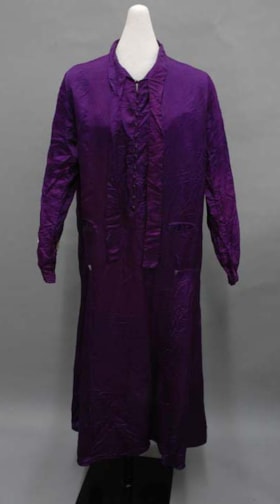
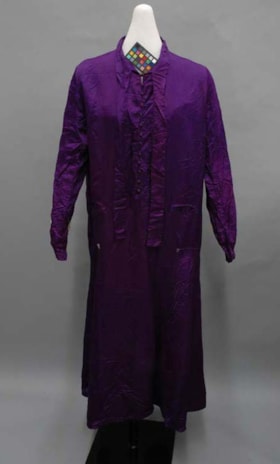
.jpg?width=280)
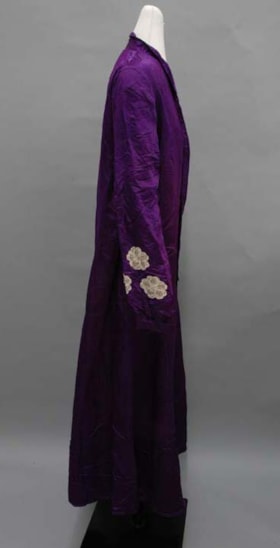
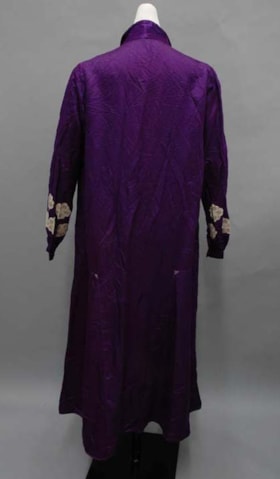
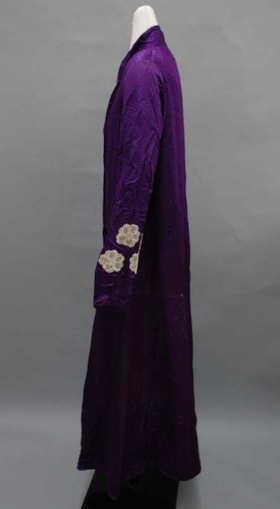
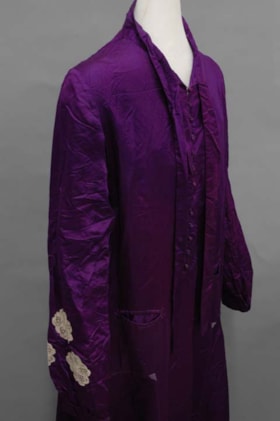
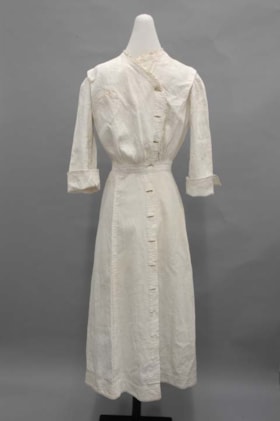
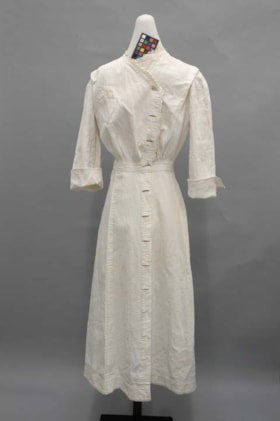
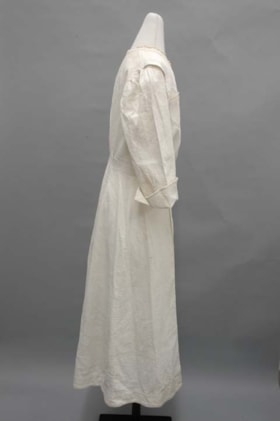
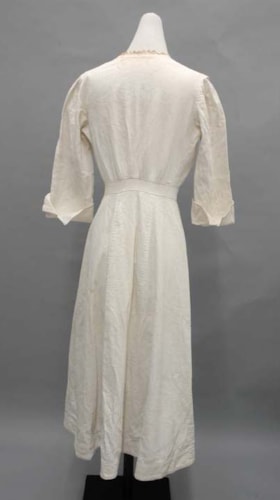
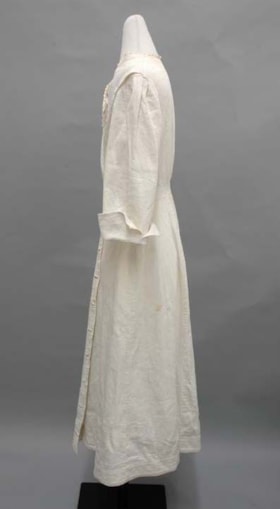
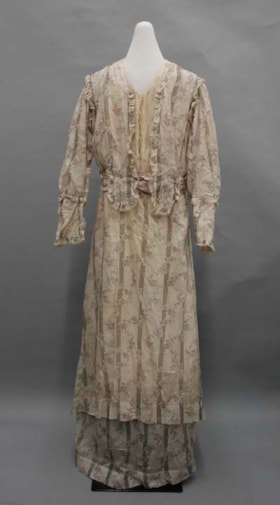
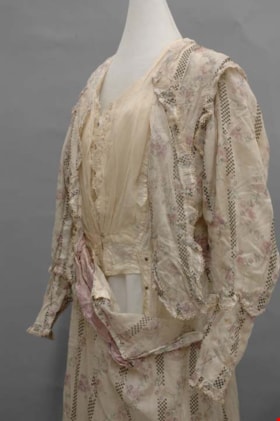
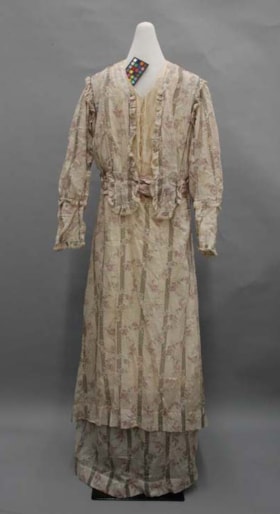
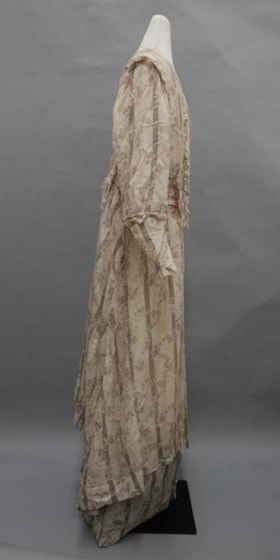
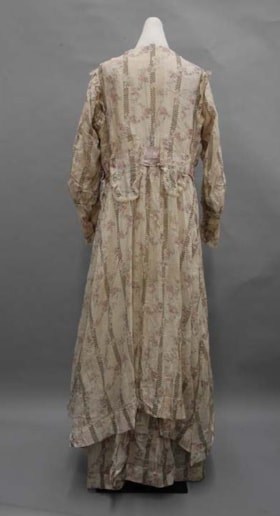
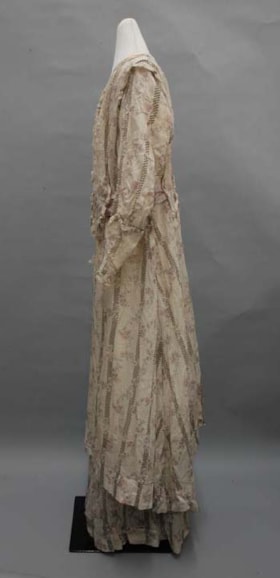
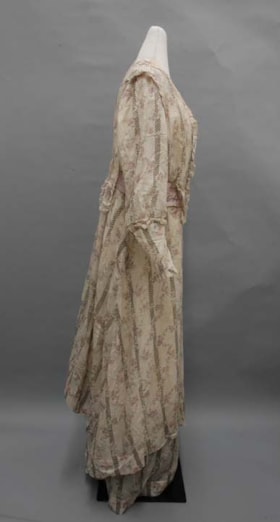
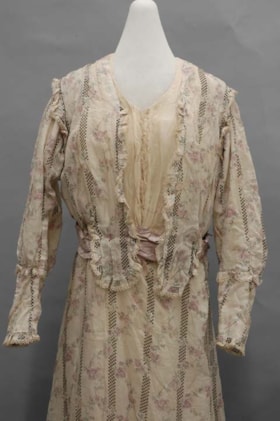
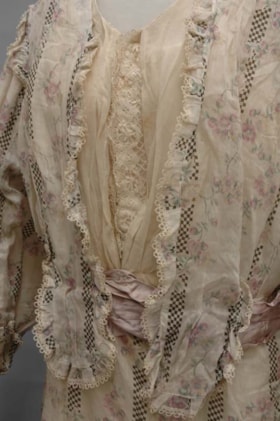
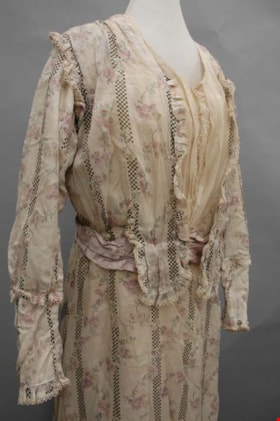
![Edith Fleming, [ca. 1900] thumbnail](/media/Hpo/_Data/_BVM_Images/2016/2016_0046_0085_001.jpg?width=280)
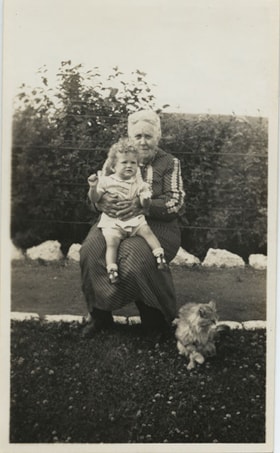
![Evelyn Hardy-Le Grove, Marie Hardy and Helen Hardy, [1939] (date of original), copied 1991 thumbnail](/media/hpo/_Data/_Archives_Images/_Unrestricted/370/370-647.jpg?width=280)
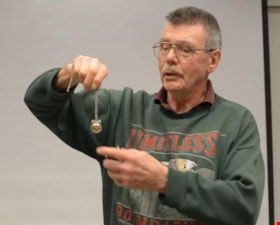
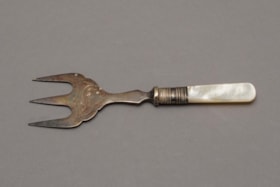
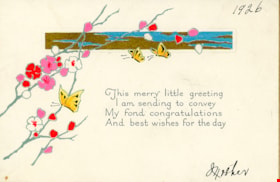
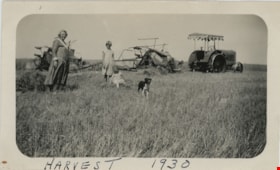
![Ina Shankie with children, [196-] (date of original), copied [2016] thumbnail](/media/hpo/_Data/_BVM_Images/2016/2016_0043_0094_001.jpg?width=280)

